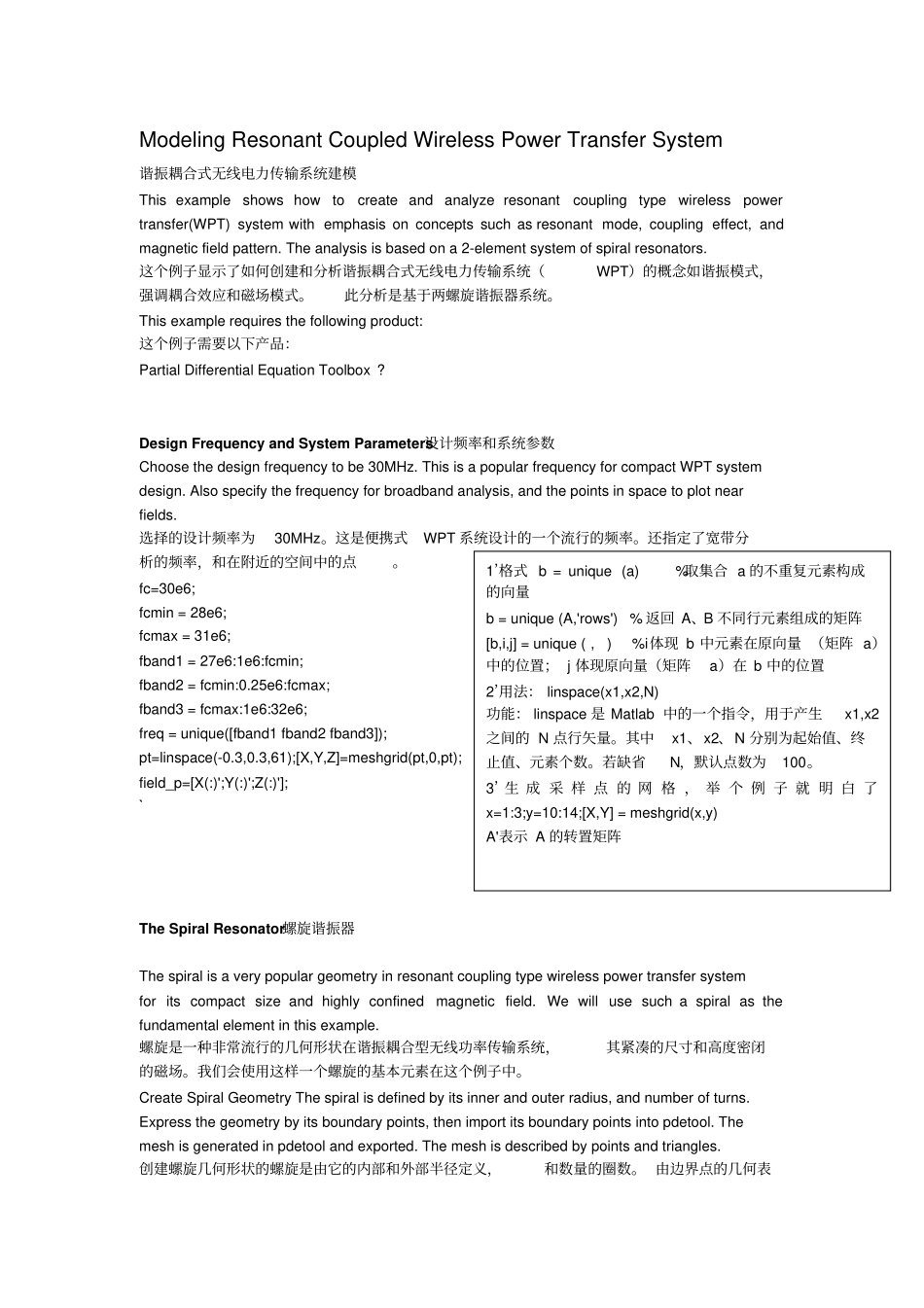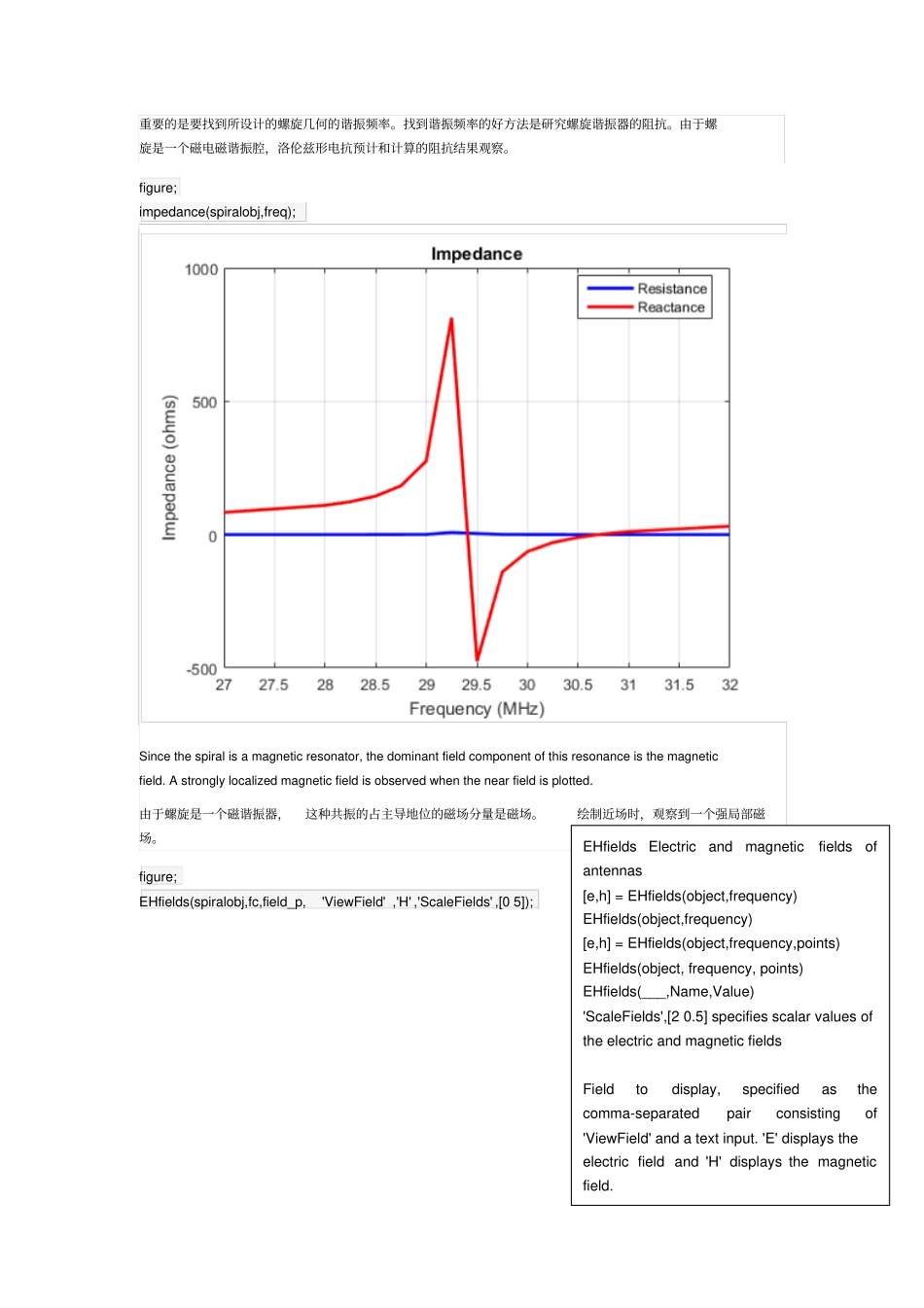Modeling Resonant Coupled Wireless Power Transfer System 谐振耦合式无线电力传输系统建模This example shows how to create and analyze resonant coupling type wireless power transfer(WPT) system with emphasis on concepts such as resonant mode, coupling effect, and magnetic field pattern. The analysis is based on a 2-element system of spiral resonators. 这个例子显示了如何创建和分析谐振耦合式无线电力传输系统(WPT)的概念如谐振模式,强调耦合效应和磁场模式。此分析是基于两螺旋谐振器系统。This example requires the following product: 这个例子需要以下产品:Partial Differential Equation Toolbox ?Design Frequency and System Parameters设计频率和系统参数Choose the design frequency to be 30MHz. This is a popular frequency for compact WPT system design. Also specify the frequency for broadband analysis, and the points in space to plot near fields. 选择的设计频率为30MHz。这是便携式WPT 系统设计的一个流行的频率。还指定了宽带分析的频率,和在附近的空间中的点。fc=30e6; fcmin = 28e6; fcmax = 31e6; fband1 = 27e6:1e6:fcmin; fband2 = fcmin:0.25e6:fcmax; fband3 = fcmax:1e6:32e6; freq = unique([fband1 fband2 fband3]); pt=linspace(-0.3,0.3,61);[X,Y,Z]=meshgrid(pt,0,pt); field_p=[X(:)';Y(:)';Z(:)']; ` The Spiral Resonator螺旋谐振器The spiral is a very popular geometry in resonant coupling type wireless power transfer system for its compact size and highly confined magnetic field. We will use such a spiral as the fundamental element in this example. 螺旋是一种非常流行的几何形状在谐振耦合型无线功率传输系统,其紧凑的尺寸和高度密闭的磁场。我们会使用这样一个螺旋的基本元素在这个例子中。Create Spiral Geometry The spiral is defined by its inner and outer radius, and number of turns. Express the geometry by its boundary points, then import its boundary points into pdetool. The mesh is generated in pdetool and e...


